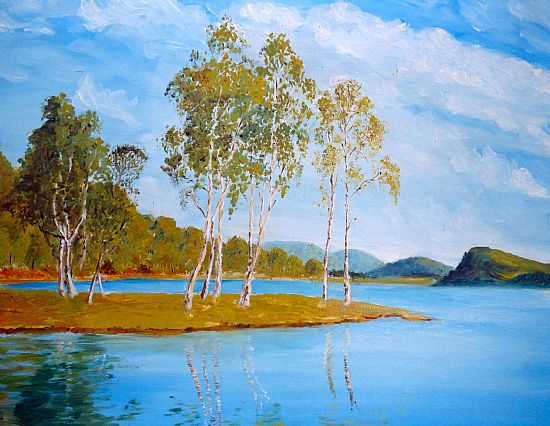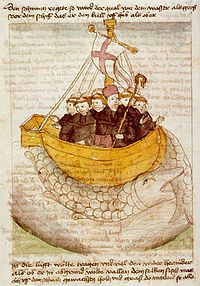Comings and Goings
Archaeologists are currently making great strides in analysing the immigrations of peoples to Britain as a whole over the long period of history before there were any written records. It is rather more difficult to establish signs of reverse migration taking place towards the Continent and elsewhere. When records do begin they are written by the conquerors and biased accordingly.
 A Painting of Loch Pityoulish by Sallie Gray
A Painting of Loch Pityoulish by Sallie Gray
The name of this beautiful small loch is a reminder of a Pictish presence in the area.
The Pictish kingdom of Fortriu had major sites at Burghead, Kinnedar, Craig Phadraig. A cluster of sites have been identified at Rhynie and there are intriguing stones at Pityoulish. As more excavations take place we will learn much more about this early homeland.
The Covesea Caves Project with its ancient burial sites and workshops facing out to sea may indicate a backward-look to a land of origin or perhaps a notion of a final migration of the spirit across the apparently infinite divide that the sea can represent to our imaginations.
The Moray Firth is likely to have known both settler and sojourner immigration and emigration from the earliest times. Most of the traffic would have been across the North Sea to and from the northern European mainland and particularly the Baltic harbours and the Netherlands.
In 1976/7, Tim Severin and his intrepid crew proved that the story of an Atlantic crossing by a curragh was, in fact, feasible and he raised the possibility of much earlier fishermen and traders making such voyages by taking a Northern route via Iceland and Greenland to Canada and North America.
If Brendan was visiting monks already there, Severin argues, there must have been prior voyages in that direction and contacts between the monastic communities which would have been, at least occasionally, a two-way traffic.
The little harbours of the Moray Firth could also have shared in this very early and surely only very occasional North Atlantic traffic.

St Brendan and his companions landing on the whale from a 15th century ms.
Are there are any myths, I wonder, in the fishing villages of “phantom” islands like Atlantis, Hy Brazil, The Isles of the Blessed, Avalon or the Greek legend of the whale island with the wonderful name Aspidochelone that provided such a treacherous landing place?
An emerging land is certainly to be found in the lovely creation myth of Turtle Island amongst some of the first peoples of North America who looked out in the opposite direction across the Atlantic Ocean towards the dawn of time.
Suggested further reading:
socantscot.org/research-project/the-covesea-caves-project/
Gordon Noble and Nicholas Evans: The King in the North Birlinn 2019
Richard Oram: Moray and Badenoch, A Historial Guide Birlinn 1996
Richard Oram: Scottish Prehistory Birlinn 1997
Tim Severin: The Brendan Voyage (numerous reprints and many cheap second hand copies are available. It is still a good read)
Donald S. Johnson: Phantom Islands of the Atlantic Souvenir Press 1996
Artistically may I suggest you look on line at the powerful work of the Scots-Canadian Artist, Simone Macleod : “Gathering of the Clans” with an explanation of it. http://fisherstar-native-woodland-art.blogspot.com/2015/05/gathering-of-clans-acrylic-by-simone.html
Simone has a rich cross-cultural background but she has now chosen to fully identify with her Objibwe roots.

